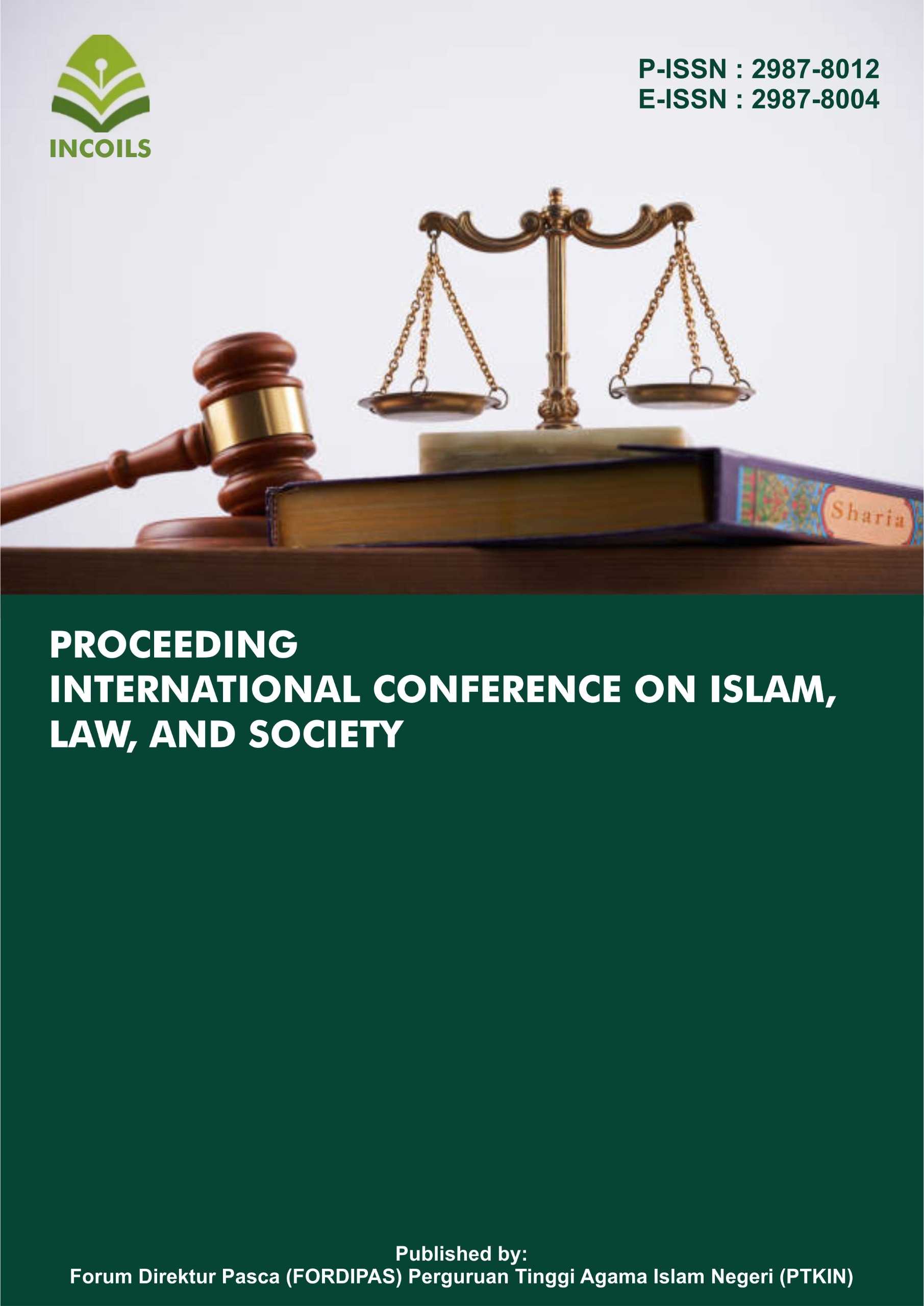Determination of Gurami Fish Prices by Middlemen Reviewed from Law No. 5 of 1999 concerning Prohibition Monopolistic Practices and Unfair Business Competition (Case Study in Balesono Village) Subdistrict Ngunut Regency Tulungagung
DOI:
https://doi.org/10.70062/incoils.v3i1.305Keywords:
Price Determination, Monopoly, Law on the Prohibition of Monopolistic PracticesAbstract
This research is based on the main problem in gourami fish cultivation, where growth is hampered by poor water quality, where inappropriate temperature and pH can disrupt the growth and appetite of fish. In addition, there are problems in marketing the harvest, such as weak infrastructure, lack of market information for farmers, small production scale, and the dominance of middlemen who often cause price injustice, although on the other hand they also help stabilize prices and become important intermediaries for farmers. The focus of this research is (1) How is the mechanism for determining the price of gourami fish carried out by middlemen in Balesono Village, (2) How can price determination by middlemen affect the market structure. then the purpose of this research is to explain as follows: (1) To find out how is the mechanism for determining the price of gourami fish carried out by middlemen in Balesono Village. (2) To find out how can price determination by middlemen affect the market structure. This research applies a qualitative method with an empirical legal approach based on field facts, which was carried out in Balesono Village, Tulungagung, to analyze how middlemen determine the price of gourami fish. The researcher acted directly as the primary instrument, using observation, interviews, and documentation techniques to collect primary and secondary data. Data analysis was conducted through patterns and categories, and its validity was tested using triangulation. The research was conducted systematically, from problem identification to reporting. The results showed that: (1) Middlemen in Balesono Village play a dominant role in determining gourami prices, often setting prices below market value due to farmers' limited information and experience, as well as their dependence on middlemen as primary buyers. (2) The gourami market in Indonesia is relatively stable with consistent demand, although distribution is still dominated by middlemen through contract and free systems, indicating evolving market dynamics and intense competition.References
Abidin, Zainal, et al . Marketing of Fishery Products . Malang: UB Press, 2017.
Anggito , Albi and Johan Setiawan. Research methods Qualitative . Sukabumi : CV Jejak, 2018.
Aziz, Abdul. Business Ethics Islamic Perspective . Bandung: Alfabeta , 2013.
Fattah Nasution, Abdul. Research methods Qualitative . Medan: CV Creative, 2023.
Ghazaly , Abdul Rahman, et al . Fiqh of Muamalat . Jakarta: Kencana Prenada Media Group, 2010.
Hermawan, Sigit and Amirullah . Research methods Business : Approach Quantitative & Qualitative . NTB, 2016.
Ministry of Religion of the Republic of Indonesia. The Quran and Its Translation . Bandung: CV Publisher Diponegoro , 2015, Surah Al-Furqan 25:67.
Kotler, Philip, et al. Management Marketing : An Asian Perspective . Jakarta: PT Indeks , 2005.
Kurniasih, Dewi, et al . Analysis Techniques. Bandung: Alfabeta , 2019.
Marbun , BN Management Dictionary . Jakarta: Sinar Harapan Library, 2003.
Mardiasmo . Public Sector Accounting . Yogyakarta: Andi Offset, 2018.
Margono, Suyud. Anti-Monopoly Law. Jakarta: PT Sinar Grafika , 2009.
Mas'adi , Ghufron A. Fiqh of Muamalah Contextual . Jakarta: PT Raja Grafindo Persada , 2002.
Mubyarto . Political Agriculture and Rural Development . Jakarta: Sinar Harapan, 1983.
Muslich , Ahmad Wardi. Fiqh Muamalat . Jakarta: Amzah, 2010 & 2017.
Nursobah , Ahmad. The Concept of Buying and Selling in Islam. Purworejo : IAI An-Nawawi, 2020.
Rahmadi . Methodology Research . Banjarmasin: Antasari Press, 2011.
Sajogyo , Pujiwati. Sociology Rural Areas . Yogyakarta: Gadjah Mada University Press, 1999.
Siswati, Endang, et al . Customer Relationship Management and Its Implementation in Small Companies. Purbalingga : CV Eureka Media Aksara, 2024.
Sulistyawati . Research Methods Textbook Qualitative . Yogyakarta: K-Media, 2023.
Umar, Hussein. Research methods For Business Theses and Dissertations . North Jakarta: Rajawali Press, 2011.
Joseph, Muri. Research methods Quantitative , Qualitative & Research Combined . Jakarta: Prenadamedia , 2014.
Al-Baiqun, BJ. “Structure-Conduct-Performance Analysis of the Gurame Fish Market in Kediri Regency.” Journal of Economic and Social of Fisheries and Marine , December 2019.
Azizah, Erfrida Nurul. “The Positive Role of Middlemen...” Indonesian Journal of Sociology and Education Policy , Vol. 1, December 2016, p. 85.
Lestari, Wiji, et al. “Study of Cost Efficiency of Cultivation and Marketing Patterns of Gourami Fish...” Agricultural Journal , October 2014, p. 4.
Malaka, Mashur. “Monopoly Practices and Business Competition.” Al-Adl Journal , Vol. 7 No. 2, July 2014, pp. 40–41.
Mekarisce, Arnild Augina. “Data Validity Checking Techniques...” Public Health Scientific Journal , Vol. 12 Issue 3, 2020, p. 147.
Nurjanah. “Consumer Satisfaction Analysis...” Student Journal , Vol. 1, November 2021, p. 121.
Onsu, Indra Foreman, et al. “Analysis of the Implementation of the Main Duties and Functions of the Sub-district Head...” Vol. 03 No. 03, 2019.
Rustam, Z., S. Syahrizal, and Haja. “Gourami Fish Maintenance...” Scientific Journal of Batanghari University, Jambi , Vol. 15 No. 04, 2015.
Salim, RA, et al. “Marketing Strategy for Aquaculture Harvests...” Journal of Tropical Aquaculture Science , March 2025, p. 108.
Sangian, Livie Meylan. “An Analysis of the Influence of Customer Value and CRM...” Journal of Business and Management Research , Vol. 3 No. 3, 2015, pp. 268–285.
Usman, Zainal, et al. “Production of Juvenile Gouramy Fish (Osphronemus gouramy) Using Recirculating Aquaculture System Technology.” Journal of Aquaculture , Vol. 10, No. 2, pp. 263 & 267
Downloads
Published
How to Cite
Issue
Section
License
Copyright (c) 2024 PROCEEDING INTERNATIONAL CONFERENCE ON ISLAM, LAW, AND SOCIETY

This work is licensed under a Creative Commons Attribution-ShareAlike 4.0 International License.







